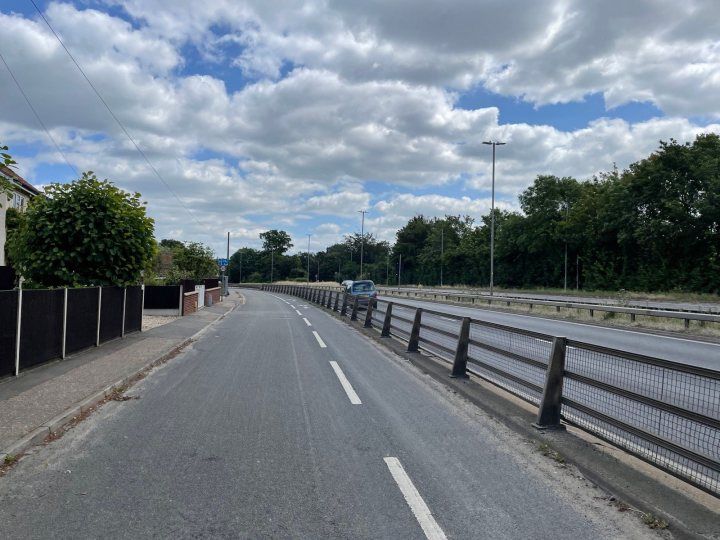Herned wrote: ↑Sat May 04, 2024 09:47
Peter Freeman wrote: ↑Fri May 03, 2024 04:39
1. "I don't really see C/D lanes as the gold standard" - nor do I (which is also a view that I've previously expressed - excuse the pun). In most cases, I'd opt simply for a wider Dx. Almost always, where you could have a C/D formation of 2-3-3-2 or 3-2-2-3, a D6 would fit instead. D6 provides the same weaving relief (sort-of anyway - stay away from the left-most lanes), and (bonus) carries more traffic; and is simpler and more comprehensible (everyone sees where to go, how to exit, etc).
I disagree. Where they are done properly they work well, there just aren't very many in the UK. An example I drove along a couple of years ago was the northern bypass of Bologna, which has proper separation for the full distance around the northern side of the city, with ~1km between junctions on the distributor road and only a couple of intermediate connections into the express lanes. I find it very hard to imagine that it would flow was well being a D5 rather than 2+3. But I would be interested to see any traffic modelling of the different scenarios
I have no evidence to back up my opinion, and anyway all these things depend on the particular case. BTW, I compared 2-3-3-2 with D6, not D5.
In the
general case of multiple carriageways versus a single wider carriageway with the same number of lanes, I believe that single will perform better. For example, 4-4 beats 2-2-2-2 in capacity. My reasoning -
The 4-4 would max out when every lane maxes out, with a similar volume (let's say 2000 pcu/hr) in each lane. There is nothing to prevent this distribution, as drivers change lanes to fill gaps. For the 2-2-2-2 to operate with each lane at that flow, the inner and outer carriageways must each carry exactly half of the total. Otherwise, there is under-utilised road surface. This equal occupation is unlikely to occur naturally. For example, when building the road, how can you
accurately predict the ratio of carriageway/carriageway loading? And that may vary with time - for example, new junctions introduced, nearby road adjustments etc.
So that's my
general reasoning. It may or may not apply in particular circumstances.
The Bologna half-ring-road that you cite is truly impressive (on G.Maps/G.Earth). It has continuous C/Ds all the way around, as you say, and very frequent junctions. The cross-section is 2-3-3-2. The outside carriageways have a shoulder, the inner ones don't (ie. ALR). Melbourne, AU, is currently commissioning a new 6km length of C/D (Westgate Freeway). It is 3-3-3-3, but it's the inner carriageways that have a HS, outers are ALR. Food for thought.
I see from G.Maps traffic layer (and it's discernable on some streetview shots) that the motorway does have considerable peak congestion, but only on the outer carriageways. I suppose this means that the design is working, though one wonders whether the format should perhaps be 3-2-2-3 instead of 2-3-3-2. I notice that there are no voluntary transfers express-to-C/D and vice versa. Also, there are only 2 or 3 places (mainly major radials, as you mentioned) where a junction offers a choice: interchange with either express
or C/D . These interchanges are very well designed, but I wonder whether this, combined with the lack of rollovers, discourages express usage. Drivers will be wary of becoming trapped on the inner carriageway and missing their exit.
All-in-all though, a most impressive road - thanks for bringing it up. I do wonder though, how a D5 or D6 version would look and work ...
